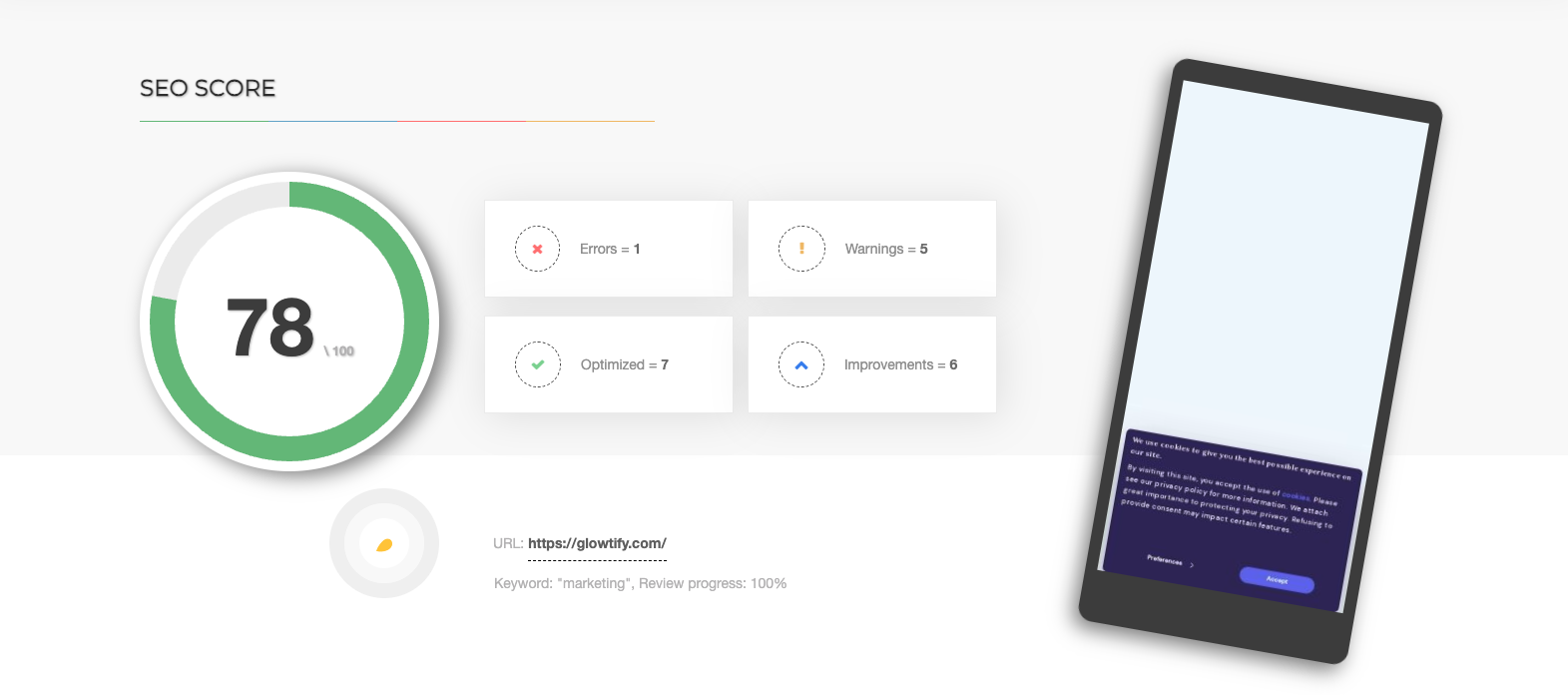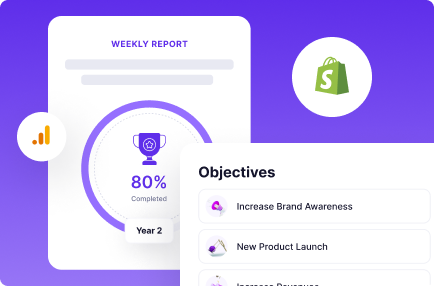Table of Contents
When it comes to online marketing, having a well-designed website is essential. But with so many metrics available, it can be overwhelming to determine how your website performs.
While some metrics may not be as important, key performance indicators can give valuable insight into the success of your site. These include bounce rate, page views, time on site, engagement metrics, conversions, referral traffic sources, landing page performance, mobile usage, and website speed.
By tracking these key metrics and understanding their significance for your business goals, you’ll be able to make informed changes and improvements for a successful online presence.
This blog post will overview the ten key website performance benchmarks you should track.
10 Key Metrics For Website Performance
Numerous factors will come into play when measuring website success; the Following are the ten best metrics you need to Understand for your website’s good performance.

The Speed Of Your Website
Regarding key metrics for website performance, website speed is a crucial element to consider. It goes beyond load time and includes time to title and start rendering.
These measurements reflect the time it takes for a user’s request to be fulfilled and for content to appear in their browser.
Speedy response in these areas improves user experience, can signal legitimacy, and increase the likelihood of visitors staying on the page. It’s important to carefully monitor and address any issues related to website speed to ensure optimal performance and satisfaction for users.
Unique Visitors
Website analytics can be overwhelming, with a plethora of numbers and data. However, one key metric to pay attention to is the number of unique visitors. It refers to the number of individual browsers accessing your site within a specified period.
In other words, if someone visits your website every day for a week, they will only count as one unique visitor. While repeat visitors are important, attracting new visitors is key for expanding your audience and impact.
Fortunately, this metric is easily accessible through the Audience tab in Google Analytics. Keep an eye on your unique visitor numbers, and use them as a key indicator of website performance and growth.
Amount Of Errors
When monitoring key metrics for website performance, it’s important to pay attention to your error rate. In this metric, you can see how many requests are having issues compared to your site’s total number of requests.

A spike in this figure can indicate a potential issue that needs addressing before it becomes a bigger problem. By continuously monitoring and analyzing your error rate, you can prevent major downtime and ensure the smooth functioning of your website.
Multiple tools are available to track and monitor this key metric. Regularly checking your error rate can ensure seamless operation for your and your site’s users.
Relative Bounce Rate
Bounce rate is one key metric to keep an eye on. It measures how many visitors leave your site shortly after arriving – often a sign that they didn’t find what they were looking for or were dissatisfied with their experience.
A high bounce rate can negatively impact conversions and overall website performance and harm your search engine optimization efforts.
To track your bounce rate, head to the Landing Pages Report in Google Analytics and scroll down to see individual page rates. Reducing this number can increase customer satisfaction and improve website performance.
Website’s Top Pages
Keeping track of key metrics for website performance can give valuable insight into what pages are successful and which may need improvement. One metric to pay attention to is conversion rate, or the percentage of visitors who take the desired action on a page, such as making a purchase or filling out a form.
Another key metric is the bounce rate or the percentage of visitors who leave the site after only viewing one page. Landing pages, the entry point for visitors to your site, and exit pages, or the last page they visit before leaving, also provide key information about how users navigate your site. You can make informed decisions about optimizing your website’s key pages for success by monitoring these metrics and others.
Rankings Based On Keywords
Key metrics like keyword ranking can provide valuable insights. Ordering specific terms can demonstrate how well your SEO strategy works, and a sudden drop in rankings can indicate a problem with your approach.
Therefore, it’s crucial to track these rankings through a tool like Ubersuggest. While rankings always fluctuate, they can give insight into how well your strategies are working and what changes need to be made. In short, tracking keyword rankings is essential to effective SEO management.
Generating Leads
Tracking key website performance metrics can provide crucial insights for improving your strategy. It is important to monitor your click-through rate (CTR), which shows what percentage of users interact with your calls to action.
It can give you valuable information about the success of your lead-generation efforts. Another important metric is the average session duration, which measures how long users spend on your site.
A longer average session duration indicates high levels of engagement, suggesting that these visitors may be good leads for conversion. By monitoring key website metrics, you can optimize your lead generation strategy and drive growth for your organization.
An Overview Of The Assets
When managing a website, tracking key performance metrics such as page load speed is important. One factor affecting load speed is the number of assets on the page. These assets include text content, images, audio, and video files.
Adding more assets to the page can drastically slow down the speed at which the page loads for viewers. Fortunately, tools are available to assess the size of your page and its assets.
If too many assets contribute to slower load times, you can consider hosting them externally to improve website performance reporting. Tracking and monitoring key metrics related to website performance can help improve user experience and potentially boost conversion rates.
Rate Of Conversion
Tracking your website’s conversion rate is key to understanding the effectiveness of your overall marketing strategy. A high conversion rate means that a significant portion of your website visitors is taking the desired action, whether completing a purchase or signing up for a newsletter.

On the other hand, a low conversion rate can indicate that changes need to be made to improve key metrics for website performance. By analyzing this data, you can adjust different site elements, such as call-to-action buttons or checkout processes, to better meet your visitors’ needs and drive conversions.
Google Analytics lets you view your conversion rate by navigating to the Conversion section and selecting Overview. Keeping an eye on this key metric can make all the difference in achieving success with your online presence.
Source Of Traffic
Tracking traffic sources is an important piece of the puzzle. This information lets you see where your visitors come from- organic search, social media, or referrals. Having an evenly balanced distribution of traffic sources is ideal, but if one source dominates the rest, this data can help inform a shift in your content strategy.
Of course, all this starts with checking in on Google Analytics to view your traffic sources. So go ahead and look at your data to determine where your focus should be when driving traffic and potential growth for your website.
Frequently Asked Questions
What Key Metrics Should I Track For Website Performance?
Several key metrics you can track to assess website performance, including traffic volume, conversion rate, bounce rate, and average session duration. By monitoring these key indicators, you can make informed decisions about how to optimize your website for success.
How Often Should I Check Key Metrics For Website Performance?
How often you check key metrics for website performance will depend on the specific metric and how frequently it changes. For example, if you’re tracking keyword rankings, it may be helpful to check daily or weekly to see if there are any sudden changes.
However, other metrics, like conversion rate, may not need to be checked as often since they tend to change more slowly.
What Does A High Bounce Rate Indicate?
A high bounce rate indicates that a large percentage of visitors to your website are leaving after only viewing one page. It can show that something on your website is not working well, such as poorly designed landing or exit pages.
By monitoring this key metric, you can make informed decisions about how to improve your website’s design and user experience.
Conclusion
You can use several key metrics to assess website performance and make informed decisions about how to optimize your website for success. These include traffic volume, conversion rate, bounce rate, and average session duration.
By monitoring these key indicators, you can improve the overall performance of your website. We hope this article gave you a better understanding of key website performance metrics to track. If you have any further questions, please feel free to reach out to us.

Want more SEO traffic?
Discovering the secret to increasing your website’s traffic could be as simple as accessing this Free SEO analyzer tool!
Try it - it's free

